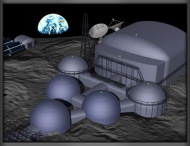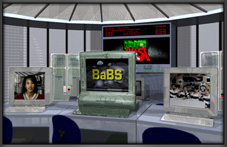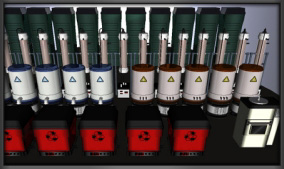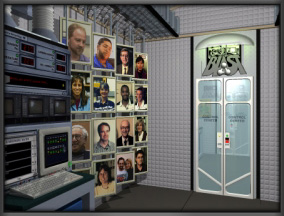Overview
Software
Schools
Development
Team
HyperNews
Chat
Archives
FAQ's
Contact
Back to
Main
Page
|
Overview of BioBLAST® Project
Goals of the Program
- to design an adventure/exploration scenario within an
engaging graphical environment
- to support an inquiry-based, cooperative-learning
approach to teaching biology in accordance with the revised National Science Education
Standards
- to provide a systems-level approach to the study of
biological issues that integrates math, science, and technology education within a
problem-solving, research-oriented context
- to work with a select cadre of teachers from schools
throughout the United States to investigate how to effectively incorporate this
interactive adventure software into state and local curricula
- to demonstrate how NASA’s Advanced Life Support
research and data can be adapted to provide valuable and motivating software, laboratory
activities, and student research that will enhance learning
Description of Program
 Using NASA’s research on Bioregenerative Life Support Systems (BLiSS)
helps students integrate many of the segmented concepts that they learn in biology, math,
chemistry, and physics. In designing a biologically-based, regenerative system to support
humans in space, students develop a greater understanding of the interdependence of living
systems. In addition, BioBLAST brings futuristic scenarios into the classroom, where
today’s students may be tomorrow’s explorers. For example, NASA anticipates
having a fully self-sufficient air, water, and food recycling system to support a
three-year mission to Mars by the year 2008. This means that students from the age of 15
and up are potential candidates for the projected 2008 international space mission to
Mars. Using NASA’s research on Bioregenerative Life Support Systems (BLiSS)
helps students integrate many of the segmented concepts that they learn in biology, math,
chemistry, and physics. In designing a biologically-based, regenerative system to support
humans in space, students develop a greater understanding of the interdependence of living
systems. In addition, BioBLAST brings futuristic scenarios into the classroom, where
today’s students may be tomorrow’s explorers. For example, NASA anticipates
having a fully self-sufficient air, water, and food recycling system to support a
three-year mission to Mars by the year 2008. This means that students from the age of 15
and up are potential candidates for the projected 2008 international space mission to
Mars.
BioBLAST includes the following features:
- A virtual-reality interface.
 BioBLAST uses a QuickTimeTM Virtual
Reality graphical interface in which interactive objects, or “hotspots,” are
embedded. The software contains a futuristic, problem-solving scenario in which teams of
students are sent to a lunar research facility where they use tools and resources in
preparation for their ultimate goal, to design and test a model bioregenerative
life-support system (BLiSS) that can support a crew of six for three years. BioBLAST uses a QuickTimeTM Virtual
Reality graphical interface in which interactive objects, or “hotspots,” are
embedded. The software contains a futuristic, problem-solving scenario in which teams of
students are sent to a lunar research facility where they use tools and resources in
preparation for their ultimate goal, to design and test a model bioregenerative
life-support system (BLiSS) that can support a crew of six for three years.
- Laboratory investigations.
A set of hands-on, laboratory experiments focuses on key components of plant production,
human requirements, and resource recycling processes. By gaining a better understanding of
these processes, students prepare themselves to design their own BLiSS models.
- Computer simulations.

Simulation software is included to supplement laboratory activities and to enable students
to perform investigations not possible in a typical high school biology lab. Three
simulations focus on the three topics covered in the laboratory, and a simulation called
BaBS (Build a BLiSS System), is used to assess each student's BLiSS system design. The
simulations give high school students access to current NASA research data.
- Computer-based resources.
The BioBLAST virtual environment contains over 300 documents, 150 images, and 40 minutes
of video. Documents include articles from scientific journals, popular magazines, and
content written specifically for BioBLAST by life-science subject-matter experts. Video
segments include a virtual “mentor,” who provides suggestions relevant to
students’ research activities, and interviews with NASA scientists currently involved
in advanced life-support research.

- Link to NASA Researchers.
BioBLAST software includes the Web-based “Ask a NASA Expert.” This on-line
resource includes an automated question-and-answer system that dynamically links student
questions with similar questions answered previously by NASA scientists and engineers.
When students want more information than the existing answer provides, they can forward
their questions to NASA experts.
|